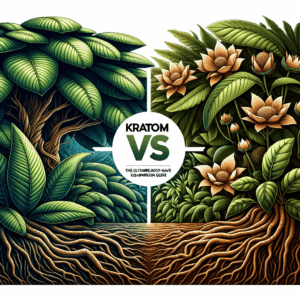
Kratom Cultural Use: Must-Have Insights for Enthusiasts
- Introduction to Kratom and its Cultural Significance
- Historical Context: Kratom in Southeast Asia
- Common Uses of Kratom in Cultural Practices
- 1. Social and Community Rituals
- 2. Traditional Medicine
- 3. Spiritual Significance
- Legality and Regulation of Kratom
- Kratom’s Arrival in Western Culture
- 1. Popularity and Misunderstandings
- 2. The Impact of Social Media and Advocacy
- Kratom Consumption Methods
- 1. Traditional Chewing
- 2. Kratom Tea
- 3. Capsules and Powders
- Kratom Strains and Their Differences
- 1. Red Vein Kratom
- 2. Green Vein Kratom
- 3. White Vein Kratom
- Strain Comparison Table
- Responsible Use of Kratom
- 1. Consultation with Healthcare Professionals
- 2. Understanding Personal Limits
- 3. Avoiding Mixing Substances
- The Future of Kratom
- 1. Growth of Research
- 2. Regulating Kratom
- Conclusion
- FAQs
- 1. What is kratom and where does it come from?
- 2. Is kratom legal everywhere?
- 3. How should I consume kratom?
- 4. What are the different strains of kratom?
- 5. Can kratom be mixed with alcohol or drugs?
- 6. What are the potential side effects of kratom?
- 7. How can I ensure responsible use of kratom?
- 8. Will kratom show up on a drug test?
- 9. Is there any scientific research on kratom?
- 10. How can I learn more about kratom’s cultural significance?
- References
Introduction to Kratom and its Cultural Significance

Kratom, a tropical tree native to Southeast Asia, has gained attention in recent years for its unique properties. While some people use kratom for relief from pain or anxiety, its deep cultural roots often go overlooked. Understanding kratom’s cultural background enriches our appreciation and responsible use of this interesting plant.
For centuries, locals in countries such as Thailand, Indonesia, and Malaysia have utilized kratom leaves in various aspects of daily life. From traditional medicine to social rituals, kratom holds a significant place in Southeast Asian culture. As the popularity of kratom rises, enthusiasts and newcomers alike should learn about its cultural significance.
This blog post aims to explore kratom’s cultural uses, the practices surrounding it, and its evolving role in Western societies.
Historical Context: Kratom in Southeast Asia
Kratom has long been a part of the cultural fabric in Southeast Asia. The indigenous peoples, particularly in Thailand, Malaysia, and Indonesia, have incorporated kratom into their daily lives. They traditionally chewed the leaves for energy, pain relief, and mood enhancement. Conversely, they also utilized kratom in spiritual practices and rituals.
In Thailand, kratom is known as “Thang,” and its use dates back to the 19th century. Historical texts show that it played a role in labor-intensive work, helping laborers combat fatigue. This cultural use has carried on through generations.
Interestingly, while kratom has been part of these cultures for years, it faced legal challenges in various countries. In Thailand, for instance, kratom was banned in the 1940s but has seen a resurgence in acceptance in recent years.
Common Uses of Kratom in Cultural Practices
Kratom serves various purposes in cultural practices, notably in social gatherings, medicinal use, and spirituality.
1. Social and Community Rituals
In many villages, kratom leaves are shared during social events. Friends and family gather to chew the leaves, fostering camaraderie. This practice often accompanies storytelling, celebrations, or even mourning rites. The act of sharing kratom symbolizes trust and communal bonds.
In addition, kratom has a historical role in herbal medicine, where healers or shamans rely on it for various ailments. When people gather for herbal ceremonies, kratom often takes center stage.
2. Traditional Medicine
Kratom’s medicinal use remains a vital aspect of its cultural identity. Indigenous cultures traditionally use kratom leaves for pain relief, treating diarrhea, and alleviating fevers. Local healers prepare teas or poultices from the leaves, showcasing their knowledge of the plant’s benefits.
Moreover, through oral traditions, families pass down knowledge about kratom, ensuring that future generations understand its uses. This generational wisdom is crucial, particularly in areas with minimal access to modern medicine.
3. Spiritual Significance
In spiritual contexts, kratom plays a role in rituals aimed at connecting with ancestral spirits. During specific ceremonies, community leaders might include kratom as part of offerings. Many believe that it encourages introspection and emotional healing.
These spiritual practices help individuals and communities process emotions and connect with history. The leaves’ calming effects allow participants to enter a contemplative state, making kratom a natural tool for those seeking spiritual clarity.
Legality and Regulation of Kratom
Kratom’s popularity has led to a complex legal landscape. In countries like Thailand, regulations have evolved significantly. As of 2021, the Thai government legalized kratom, recognizing its cultural importance and potential economic benefits.
However, many countries, including the United States, still grapple with kratom’s legal status. Some states have banned kratom, while others have embraced it. This patchwork of regulations can confuse users and enthusiasts.
It’s crucial for anyone interested in kratom to research local laws. Awareness of regulations helps ensure responsible use and ties back to respecting its cultural origins.
Kratom’s Arrival in Western Culture
Kratom was introduced to Western markets in the early 2000s, capturing the attention of health enthusiasts. People increasingly sought natural alternatives to pharmaceuticals. As kratom spread, so did misconceptions and polarized opinions.
1. Popularity and Misunderstandings
Today, kratom enjoys a diverse following in the West. Individuals use it for various reasons, including pain management, anxiety relief, and social anxiety. However, misunderstandings about kratom’s safety often lead to skepticism.
While some studies suggest positive effects, others raise concerns about potential side effects. Users should approach kratom with caution. Understanding and recognizing its cultural backdrop is key to responsible usage.
2. The Impact of Social Media and Advocacy
Social media platforms have played a significant role in kratom’s growth. Forums, groups, and influencers share personal experiences, fostering community and support. Advocacy groups also campaign for kratom’s acceptance and regulate its use as a dietary supplement.
This digital age allows enthusiasts to connect, share stories, and inspire cautious exploration of kratom. Nevertheless, this environment also requires discernment regarding which advice to trust.
Kratom Consumption Methods
Understanding how to consume kratom is essential for enthusiasts. There are various methods, each with its benefits and drawbacks.
1. Traditional Chewing
Chewing fresh kratom leaves is the most traditional method. Users simply chew the leaves to access the compounds quickly. This method often leads to a more robust effect but requires access to fresh leaves, which may be challenging outside Southeast Asia.
2. Kratom Tea
Making kratom tea is another popular method. Users steep powdered kratom in hot water, sometimes adding sugar or lemon for flavor. Brewing tea offers a smoother taste and helps mask the bitterness of kratom.
| Method | Pros | Cons |
|———————|————————-|—————————-|
| Traditional Chewing | Quick effect | Requires fresh leaves |
| Tea | Smoother taste | Takes longer to feel effects|
3. Capsules and Powders
Kratom capsules and powders have gained popularity in the West. These forms allow for easy dosing and portability. Users can conveniently take a capsule or mix powder with food or drinks.
However, be cautious with dosage. The effects can vary significantly between different types of kratom, and accurate dosing can be tricky.
Kratom Strains and Their Differences
Kratom comes in various strains, each offering distinct effects. Understanding these differences enhances the user experience and respects the plant’s cultural background.
1. Red Vein Kratom
Red vein kratom is known for its calming and sedative properties. It’s popular for those seeking relaxation or pain relief. Users often take it in the evening to unwind after a long day.
2. Green Vein Kratom
Green vein kratom provides a balance of energy and calmness. Many users report increased focus and enhanced mood. This strain is favored for social activities or productive tasks.
3. White Vein Kratom
White vein kratom offers stimulating effects. Users often take it to boost energy or combat fatigue. It’s ideal for those needing a midday pick-me-up or motivation for physical activities.
Strain Comparison Table
| Strain | Effects | Best Use |
|———————|————————————-|——————————-|
| Red Vein | Calming, pain relief | Evening relaxation |
| Green Vein | Balanced energy, focus | Social and productive tasks |
| White Vein | Stimulant effects | Midday energy boost |
Responsible Use of Kratom
With any substance, responsible use is critical. First and foremost, users should educate themselves on proper dosing. Overconsumption can lead to adverse effects.
1. Consultation with Healthcare Professionals
Consulting with a healthcare provider is essential, particularly for individuals with specific health concerns. Professional guidance can help mitigate risks and enhance the overall experience.
2. Understanding Personal Limits
Every individual reacts differently to kratom. Start with a low dose to assess your body’s response. Gradually adjust as necessary, but always stay mindful of your limits.
3. Avoiding Mixing Substances
Mixing kratom with alcohol or other substances can be dangerous. Each compound can amplify effects or cause unexpected side effects. Stay safe by using kratom on its own.
The Future of Kratom
As kratom usage continues to evolve globally, its future holds both promise and challenges. Increased awareness can foster a better understanding of kratom, ensuring respect for its cultural significance.
1. Growth of Research
More scientific studies are necessary to unlock kratom’s potential. Research on its benefits and risks will help users make informed choices. As awareness grows, so do opportunities for education.
2. Regulating Kratom
Governments and organizations must consider creating guidelines for kratom usage. A regulated approach can help protect consumers while respecting cultural traditions.
Conclusion
Kratom offers a unique glimpse into the rich tapestry of Southeast Asian culture. From traditional medicine to social rituals, its significance is profound. Nevertheless, as kratom gains popularity in the West, respectful usage is paramount.
With ongoing discussions surrounding its legality and ethical considerations, kratom enthusiasts must prioritize awareness and education. Understanding its cultural history fosters a more responsible approach.
Let’s engage in respectful conversation around kratom, honor its origins, and ensure a well-informed community moving forward.
FAQs
1. What is kratom and where does it come from?
Kratom is a tropical tree native to Southeast Asia, known for its leaves that have psychoactive properties. It has a long history rooted in local customs and traditional medicine.
2. Is kratom legal everywhere?
No, kratom’s legality varies by country and within the United States. Some states have banned it, while others allow its use. Check your local laws before using it.
3. How should I consume kratom?
Common methods include chewing the leaves, brewing tea, or taking capsules. Each method has its pros and cons, so choose what works best for you.
4. What are the different strains of kratom?
Kratom comes in several strains, including red, green, and white. Each strain offers different effects, such as relaxation or energy enhancement.
5. Can kratom be mixed with alcohol or drugs?
Mixing kratom with alcohol or other substances can be dangerous. It’s recommended to consume kratom alone to avoid unexpected effects.
6. What are the potential side effects of kratom?
Some users report side effects such as nausea, dizziness, or dependency. Understanding your limits and starting with a low dose can mitigate these risks.
7. How can I ensure responsible use of kratom?
Educate yourself about dosages, consult healthcare professionals, and avoid mixing with other substances.
8. Will kratom show up on a drug test?
Most standard drug tests do not screen for kratom. However, specialized tests can detect its presence.
9. Is there any scientific research on kratom?
Research on kratom is limited but growing. Most studies focus on its potential benefits and risks. More rigorous research is necessary for conclusive evidence.
10. How can I learn more about kratom’s cultural significance?
Numerous resources are available online, including articles, books, and community forums that focus on kratom’s history and traditional uses.
References
1. Kratom: A Cultural Overview
2. Legal Landscape of Kratom
3. Understanding Kratom Strains
4. Safety and Responsible Use of Kratom
5. Future of Kratom Research
By exploring kratom’s cultural roots and use, we not only honor its origins but also empower responsible practices in our growing community.


